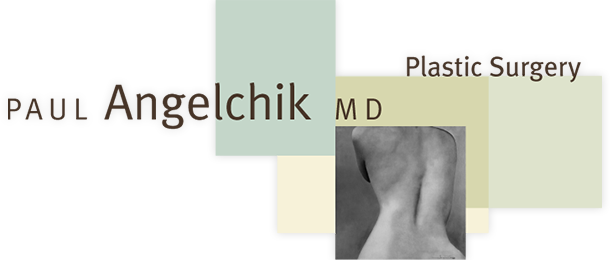Breast Augmentation
Get the Perfect Size & Shape with Breast Augmentation
Quick Links
Doctor Certifications
Dr. Angelchik was certified by the American Board of Plastic Surgery (ABPS) in 1996 and successfully completed a rigorous recertification process in 2006 and 2016. He participates in the Maintenance of Certification program through the ABPS. He is a member in good standing of the American Society of Plastic Surgeons. He has also been named to Castle & Connolly’s Top Doctors in America every year since 1996.


Dr. Paul Angelchik is a Phoenix plastic surgeon who is board-certified by the American Board of Plastic Surgery. He is also a member of the American Society of Plastic Surgeons. Dr. Angelchik is well-trained and experienced in all forms of plastic surgery, namely breast enhancement and facial rejuvenation. He has been serving patients for over 20 years. Dr. Angelchik brings his surgical experience, expertise, and quality care to patients in and around Phoenix, Arizona.

Breast Augmentation – Saline vs. Silicone Implants Explained By Plastic Surgeon Dr. Paul Angelchik
Breast augmentation surgery in the Phoenix, Gilbert, and Glendale area can enhance, reshape, or reconstruct your breasts using surgically placed implants, and can often be performed along with other breast procedures. Breast augmentation, or a “boob job,” is one of the most popular cosmetic surgery options performed each year and comes with one of the highest rates of patient satisfaction.
Some women opt for a breast lift in conjunction with a breast augmentation to reverse the negative effects of aging or pregnancy on the breasts, including drooping and sagging. And breast enhancement isn’t just for cosmetic purposes. Breast cancer survivors regularly consider breast reconstruction after having a mastectomy to reclaim a feminine body shape and restore a sense of normalcy.
Surgery for breast augmentation reaches back over a hundred years, but it wasn’t until the 1960s that surgical procedures for breast augmentation began to resemble the procedures plastic surgeons use today.
During the early days of breast augmentation surgery, a variety of different materials were implemented to enhance the breasts. The modern history of breast augmentation began when silicone implants were introduced in 1962. The new silicone implant ushered in an age of increased demand and higher quality results that drove the development of multiple new implant types and surgical techniques. Today, women have many options for breast enlargement, including choice of implant material, and shape, incision placement, and combination surgeries.
What Patients Are Saying
Dr. Angelchik is a very talented professional! He performed my breast augmentation and I couldn’t be happier with my results! Read More >
The ideal candidate for breast augmentation is someone with fully developed breasts and is in generally good health. In addition, good candidates are:
- The legal age— 18 for saline implants, 22 for silicone
- In good overall health with no active infections or underlying medical conditions
- Not pregnant or planning on becoming pregnant in the future
- Ideally a non-smoker or willing to give up smoking for a certain amount of time before and after the procedure
- At a stable weight
Questions to ask yourself if you’re considering breast augmentation Phoenix:
- Do you believe your breasts are too small and that larger breasts would improve your self-confidence?
- Do you feel self-conscious about one breast being noticeably smaller than the other?
- Has having children or losing weight altered your breasts in a way you are not comfortable with?
- Do you have a problem finding clothes that fit well because of a too-small bust compared to your hips?
If you answered yes to these questions, you may be a good candidate for breast surgery.
Another key factor in the overall success of any breast augmentation surgery is a patient who has realistic expectations.
People who expect to become pregnant or breastfeed in the future are discouraged from having breast surgery, as these activities can alter the shape of your enhanced breasts. Depending on genetics, weight stability, general health, diet, skin health, and other factors, some women may develop ptosis or sagging breasts as early as their 20s, and others later in life.
Read Our Blog
Breasts are naturally slightly different in size from one another—usually by less than a bra cup size. Some women are bothered more than others by this normal difference and seek plastic surgery to correct it. But when breast asymmetry is greater than one cup size, the nipple or breast position is clearly different, or the breasts are different shapes, you may benefit from breast augmentation for correction of breast asymmetry.
Other indicators for potential breast augmentation patients include obvious differences in shape, from conical to tubular, that affect one’s appearance or self-confidence.
Dr. Angelchik is a very talented professional! He performed my breast augmentation and I couldn’t be happier with my results! Read More >
Once you decide to have breast augmentation surgery in Phoenix, you will need to make several other decisions about the various breast implant and placement options available to you. After evaluating your cosmetic goals and current condition, Dr. Angelchik will discuss these options with you and recommend the approach he feels is best. Ultimately, however, the decision will be up to you. There are two implant options available to patients of Dr. Angelchik:
- Saline implants – Filled with a salt-water solution, saline breast implants allow for precise control over the size and volume of your breasts.
- Silicone implants – These breast implants tend to have a more realistic look and feel, and use a leak-resistant cohesive gel to achieve a natural aesthetic, making them an increasingly popular option among patients.
When it comes to the incisions, there are four options available to you, which depend on the type of implant used (silicone or saline) and your anatomy. It can also be affected by any additional procedures you opt for. These incisions include:
- Inframammary – This incision is made along the lower crease of the breast. Dr. Angelchik can access the breast pocket well with this incision, and it provides optimal control of implant placement.
- Periareolar – This incision is made along the edge of the areola. Any scar from this incision is hidden well by the darker pigmentation of the nipple.
- Transaxillary – This incision is made in the armpit to reduce scarring; this is usually done with saline implants using an endoscope.
- Transumbilical augmentation (TUBA) – This incision is made in the navel, where implants are placed using an endoscope.
There are two types of implants available for breast surgery, which are classified by their filling material: saline and silicone gel implants. Both types of breast implants contain a silicone shell. Your implants can be placed one of a few different ways:
- Subpectoral – The implant is placed partially or totally beneath the pectoralis major, the muscle of the chest. The advantages of this type of placement are a more natural look and feel, a smaller chance of interfering with a mammogram, and a lesser chance of the implant drooping.
- Subglandular – The implant is placed above the muscle, but still lies below the natural breast tissue. This allows for a larger implant, with more lift, and shorter recovery time.
- Dual-Plane – The implant is placed partially beneath the muscle where the bottom of the implant is not covered by muscle tissue. This placement can provide additional volume and correction for patients lacking volume at the bottom of the breast (sometimes called tubular breasts).
Breast surgery is an outpatient procedure performed using general anesthesia. First, Dr. Angelchik makes a predetermined incision, then creates a pocket within the breast tissue. The implant is then placed according to your surgical plan.
Once the implants are in place, the incisions are closed using special sutures. Before being released from the facility, you’ll be fitted with a special support garment, similar to an athletic bra.
Many candidates for breast augmentation in Scottsdale are concerned about how the surgery will affect future pregnancies, or how pregnancy will affect their prior breast augmentation. The encouraging news is that breast augmentation and pregnancy are totally safe for both mother and baby. In addition, breast augmentation does not affect most patients’ ability to breastfeed. In Dr. Angelchik’s experience, a periareolar incision does not lead to more numbness in the nipple if the dissection to create the pocket is done properly. Most numbness is related to pocket dissection, nerve location, and implant size issues, not the location of the incision.
While breast augmentation has no effect on pregnancy, the changes to a woman’s body during pregnancy can affect breasts that have been augmented in the same ways that pregnancy affects natural breasts. Normally, a woman’s breasts enlarge during pregnancy, stretching the skin and tissues, which typically results in sagging after the pregnancy.
Any type of surgery carries some risk, but breast augmentation is typically safe when performed by a board-certified plastic surgeon. While the risks are extremely rare, we believe it is in your best interest to understand all there is to know about these risks before you decide to undergo breast augmentation with Dr. Angelchik.
Some of the risks involved with breast augmentation include:
- Infection – Dr. Angelchik will give you antibiotics as part of your post-op recovery. If you take them as prescribed, your chances of infection are virtually zero.
- Anesthesia – Using sedatives or anesthesia is a must with breast augmentation. The risk with anesthesia usually comes in the form of an allergic reaction. If this happens, Dr. Angelchik and his staff will deal with it immediately.
- Loss or change in sensation – Some patients may lose sensitivity in their breasts or nipples for a short amount of time after surgery. This is temporary but may last six to twelve weeks. However, in very rare instances, this loss of sensation is permanent.
- Scarring – Scarring is inevitable with breast augmentation. However, these scars will fade over the course of about a year, and will be placed as to be unnoticeable most of the time. Some patients who are prone to excessive scarring need to keep this in mind when considering breast augmentation.
- Rippling – Saline implants are more prone to rippling than silicone ones. Those placed behind the muscle, or submuscular, are less likely to show rippling than those placed in front of the muscle.
- Deflation or leaking – If an implant’s shell fails, it can cause leaking of the saline or silicone. Saline is part of the body’s natural makeup, so if your saline implant leaks, it is absorbed into the body. Silicone will stay in the area of the breast and the entire implant will have to be replaced by Dr. Angelchik.
- Capsular contracture – This is a tightening around the implant caused by scarring that can be uncomfortable or painful. Massaging the implant and taking vitamin E supplements should minimize this effect. Some patients may require corrective surgery if the tightening becomes too much.
Recovery is different for every breast augmentation patient. You may experience pain and soreness, or you may only experience discomfort as you heal. It usually takes three to five weeks to get back to your normal routine, and several months before you are completely healed.
You will wear a dressing and elastic bandage for about a week after your procedure but will be up and about within a couple of days. You should avoid any strenuous activity or heavy lifting for four to six weeks after your procedure.
In addition you will be prescribed pain medication to help you with the healing process, but any discomfort should dissipate after a couple of weeks. Bruising and swelling are to be expected, but this too will disappear. Scarring will fade over time and may only be noticeable upon close examination after a while.
Suggestions for good health for your breasts (and for your body, in general):
- Maintain a consistent weight so that your skin doesn’t stretch and sag after you lose weight.
- Avoid smoking as it is not just hard on your lungs. Smoking can cause your breasts to sag much earlier in life and can impede healing after surgery.
- Get fitted for bras that are appropriate to your breast size, shape, weight, and activities. The right bra will reduce stretching your ligaments during exercise.
If your job is not physically strenuous, you can expect to go back to work after about a week of downtime. More physically demanding activities, like exercise and sports, should be avoided until Dr. Angelchik advises you they are safe.
Most patients can resume all of their normal activities within a month. By carefully following the post-operative instructions provided by Dr. Angelchik and attending every scheduled follow-up appointment, you can ensure that any unusual symptoms are quickly addressed and avoid significant complications that can extend your recovery time.
Even after you are back in your daily life activities, it will take time for post-surgery swelling to completely dissipate. You can expect to see the full results of your breast augmentation after several months, although swelling can last longer for some patients.
The results of a breast augmentation procedure are long-term and will continue to settle as the recovery from breast augmentation continues. It’s reasonable to expect your implants to last anywhere between 10 and 25 years, but there is no predetermined expiration date.
When choosing a plastic surgeon for breast enhancement surgery, there are quite a few things to take into consideration. You will want to know things like the surgeon’s qualifications and experience, skills, facilities, staff, references, fees, and financing options.
When you consult a plastic surgeon, ask questions and take notes. Bring photos of what you desire your results to look like. A confident surgeon will be pleased with your research attempts and be willing to assist you. An important thing to ask is if the surgeon is board certified in plastic surgery. Being board certified indicates they have completed extensive specialized training that reveals superior knowledge, experience, and a commitment to excellence.
Your surgeon should have experience with the breast augmentation procedure you are having performed and their support staff should be well qualified also. Do you feel comfortable with the staff and surgeon during your consultation? Do they treat you well or did you feel like a “number”?
If you’re interested in breast augmentation in Phoenix, Scottsdale, or Glendale, AZ area, feel free to call board-certified plastic surgeon Dr. Angelchik today at 602-375-8888 or contact us online to schedule a consultation. Dr. Angelchik has a reputation for providing excellent care and naturally beautiful results for all his breast augmentations.
FAQs
Are breast implants under warranty?
Can breast implants cause pain years later?
Can breast implants last 30 years?
Can fat be transferred to breasts?
Can I move my arms after breast augmentation?
Can you breast feed after breast augmentation
Do breast implants cause autoimmune disease?
Do breasts sag after breast augmentation?
Do you have to replace breast implants every 10 years?
Does getting breast implants make you gain weight?
Does insurance cover breast implants?
How dangerous is breast augmentation surgery?
How do I know if my breast implant is leaking?
How do I prepare for breast implants?
How do you know if you have capsular contracture?
How long are breast augmentation incisions sore?
How long do breast implants last?
how much does breast augmentation cost?
How painful is breast augmentation recovery?
Is breast enlargement possible without surgery?
Is getting a breast augmentation worth it?
Is there an alternative to breast implants?
What are cohesive breast implants?
What are gummy bear implant?
What can go wrong with breast implants?
What is the average cost of a breast augmentation?
What is the difference between a breast augmentation and breast implants?
What is the most common breast implant size?
Whats the safest breast implant?
Will Cigna cover breast augmentation?
How many days after a breast augmentation can you go back to work?
When do implants drop?
Our Gallery
View our Breast Augmentation Gallery here.













